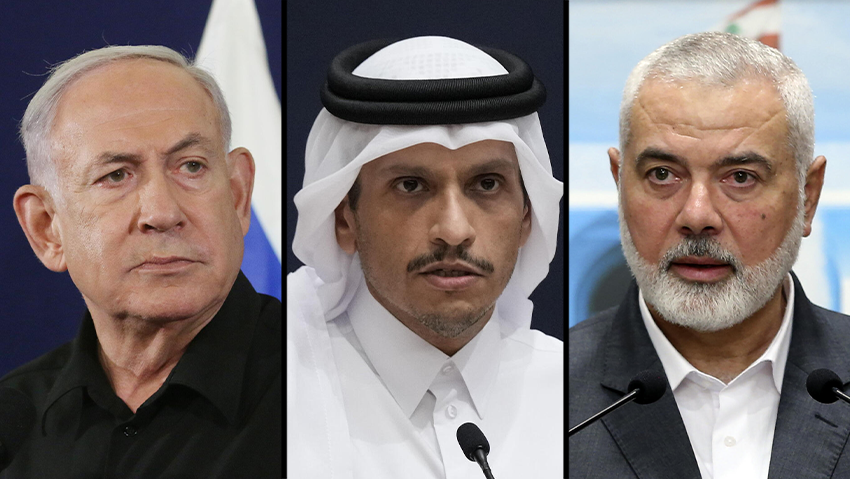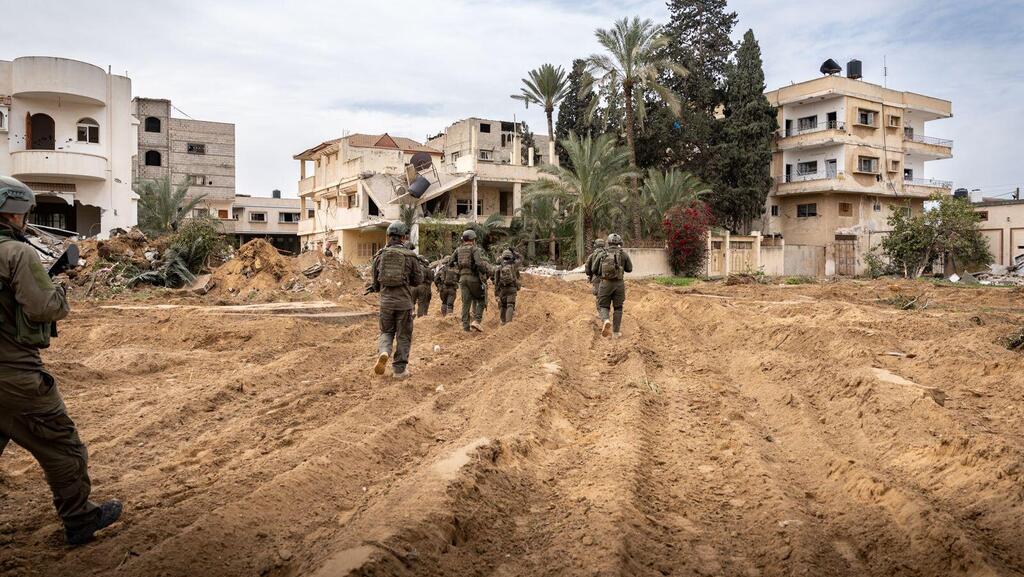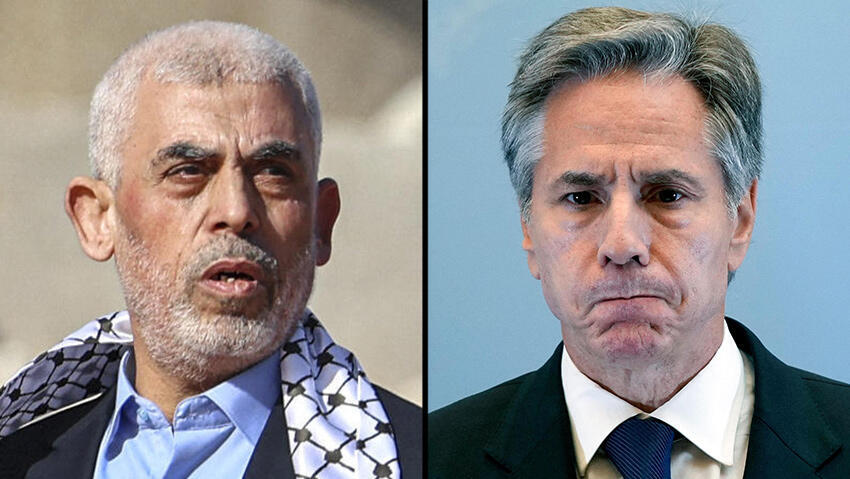Getting your Trinity Audio player ready...
Israel is still waiting for an update regarding Hamas' position on the hostage release deal outlined at the summit in Paris, amid tensions between Hamas leaders in Gaza and those staying abroad. Israel estimated Hamas’ response would come by the end of the week, however, it now seems the terrorist organization may give its answer only on Sunday.
More stories:
On Friday, Qatari Prime Minister Mohammed Al Thani returned from Washington after receiving a response from Hamas in a personal meeting, which is expected to reach Israel as well. Israel is aware that one of the obstacles to the deal is the significant tension between Hamas leaders Yahya Sinwar and Ismail Haniyeh, which has yet to be resolved.
3 View gallery


Benjamin Netanyahu, Mohammed Al Thani, Ismail Haniyeh
( Photo: Dana Kopel, Dalati Nohra/Lebanese Official Government via AP, AP /Jacquelyn Martin, Pool)
The Wall Street Journal’s report on Friday about disagreements within Hamas leadership regarding the deal captured the headlines in Arab media on Saturday, which are now reporting a certain flexibility in the terrorist organization's stance, leaning toward accepting the deal.
According to the Saudi newspaper Elaph, Hamas is no longer insisting on a complete cease-fire in Gaza as a term for it to accept the deal. The report added the terrorist organization may settle for a guarantee for the cease-fire’s terms provided by the intermediaries, including an increase in humanitarian aid entering the Gaza Strip.
However, Hamas also insists on personally selecting the terrorists to be released from Israeli prisons as part of the deal. The terrorist organization also insists on allowing Gazans to return to their homes throughout the Strip.
According to the Wall Steet Journal’s report, the organization’s internal dynamics experienced a "reversal," with Hamas leader in Gaza Yahya Sinwar, who’s reportedly exhausted after months of fighting, saying he was willing to accept the proposal for an initial pause to hostilities lasting six weeks. Other senior Hamas members in the Gaza Strip share this position.
In contrast, Ismail Haniyeh, head of Hamas’ politburo, argued in recent days that the terror group needs to conduct ongoing negotiations for a permanent cease-fire to be assured by Israel to foreign countries, alongside a plan to rebuild the Gaza Strip.
Haniyeh gave a public statement on Friday in which he said that during talks with Islamic Jihad leader Ziyad al-Nakhalah, both parties agreed that any deal must lead to the end of the war, the withdrawal of IDF forces from the Gaza Strip, the lifting of the military blockade, and the reconstruction of Strip.
Prime Minister Benjamin Netanyahu clarified that he would not agree to the withdrawal of IDF forces from the Strip, the end of the war, or the release of thousands of terrorists from Israeli prisons — three conditions he defined as his "red lines."
According to another report in Elaph, consultations within Hamas are taking place frequently in anticipation of U.S. Secretary of State Antony Blinken’s visit to Israel set to take place next week. A senior member of the terrorist organization said on Friday that the response to the proposal for the deal would be delivered "very soon," but has yet to provide an update.
Israel isn’t expecting to receive a straightforward answer from Hamas and believes the terror group will respond with its own conditions to further the deal. Afterward, the ball will be back in Israel's court, and estimations say it will take some time before substantial negotiations begin between the sides.
Details presented to the security cabinet on Friday suggest a draft of the deal has not yet been finalized, with Israel agreeing only to a framework for the deal presented by mediators. According to reports, key details such as the number and identity of the released terrorists have not been agreed on.
The cease-fire, as clarified in the discussion, may last for up to 142 days, according to the following outline: In the first phase, 35 Israeli hostages will be released during a 42-day period – one day per released captive, and an additional seven days for negotiation on the next phase.
After this phase, around 100 hostages will still be held by Hamas, implying that the pause in fighting may continue for an additional 100 days.




